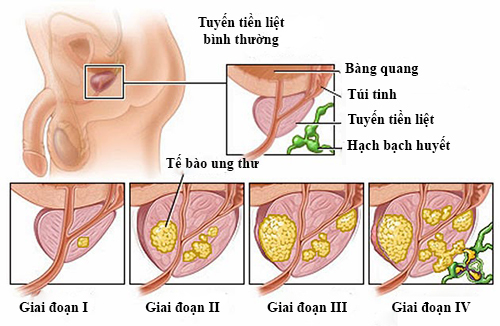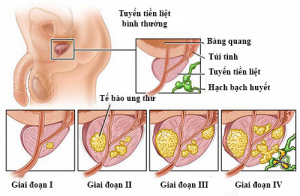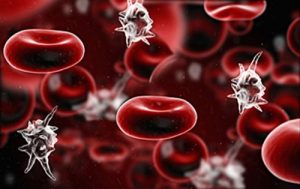How dangerous is prostate cancer?
20/05/2021
Prostate cancer is one of the most common cancers in men. This is a quite dangerous disease, causing serious problems, but if detected and treated properly, the disease can be completely cured.
1. General information about prostate cancer
The prostate is a gland found only in men, located below the bladder, in front of the large intestine. The prostate gland surrounds the urethra, which is extremely important for the reproductive process, as it is the organ that produces semen and transports sperm.

Prostate cancer, also known as prostate cancer, is a common disease in men, caused by abnormal or uncontrolled growth of prostate cells. Usually, the disease develops slowly in the early stages, if detected and treated early, the patient can live for many years, even completely cured. However, if the disease becomes severe, the rate of disease development is very rapid, even fatal.
Although the cause of prostate cancer is currently unknown, according to some studies, prostate cancer is influenced by a person’s diet and genes. People who eat a lot of fat have a higher risk of disease.
2. Prostate Cancer Stage
- Stage I: Cancerous tissue is found only in the prostate gland, which looks like normal prostate tissue.
-
Stage II: The tumor is detectable through a rectal exam, biopsy, or PSA blood test. At this stage, the cancer cells have not shown signs of metastasis to other parts, but have shown signs of growing faster than stage I.
-
Stage III: Cancer cells have invaded the tissues surrounding the prostate gland, and may also have spread to the seminal vesicles.
-
Stage IV: Cancer has spread to lymph nodes, rectum, bladder, or even distant organs such as bones, liver, or lungs.

Thanks to the great development of medicine, prostate cancer diagnosis is made by many different methods with high efficiency; in which emerging is the method of testing PSA in the blood to help detect the disease at an early stage. By this method, the disease can be detected in time, even the disease can be completely cured. A study on prostate cancer with white American subjects, said that the prognosis depends on the stage of the disease, the 5-year survival rate when the disease is detected at an early stage is nearly 100%, while the rate when detected at the time when cancer cells have metastasized is 34%.
3. Prostate cancer treatment regimen
Based on the patient’s medical condition, such as tumor metastasis, histological grade, blood PSA level, age and health of the patient, the doctor will diagnose and prescribe treatment methods. different.
- Monitor disease status: In the case of patients under 60 years of age, with prostate cancer at stage T1a, only close monitoring is required and no treatment is carried out. The simple monitoring method is usually applied to low-grade histopathology, the tumor is localized in the prostate gland and has not metastasized outside.
- Radiotherapy: Radiation therapy is a method of using high-energy radiation to destroy cancer cells. This method brings immediate effects and can be used for all stages of the disease when needed. For patients with stage T3 disease, the usual method is radiation therapy. However, if the patient is elderly or in poor health, radiation therapy may not be considered because the disease progression in these people is often very slow.

- Endocrine treatment: The goal of endocrine therapy is to reduce male hormones, thereby slowing the development of the disease. Hormonal treatment has 2 basic methods: male hormone suppression by testicular surgery and by hormonal drugs (in case the patient has contraindications to surgery or refuses surgery). In case the cancer is in the final stage, the tumor has metastasized, it is possible to combine endocrine therapy with radiation therapy, depending on the individual’s condition. If the tumor has metastasized but has not shown clinical symptoms, it is possible to wait until symptoms appear before starting treatment, because the effect of the drug does not depend on this waiting period.
- Prostate removal surgery: This is an effective treatment for early prostate cancer. With this method, surgery to remove the entire prostate gland, depending on the case, it is possible to remove the seminal vesicles and lymph nodes on both sides of the pelvis to completely remove cancer cells before they have spread to other parts. . The doctor will consider the medical condition of each person and prescribe open or laparoscopic surgery. Robotic laparoscopic surgery technology has now been applied in Vietnam. Vinmec International General Hospital is one of the first facilities to introduce robots into laparoscopic surgery, thereby being able to access narrow and deep terrain; helps to overcome the limitations of classical endoscopy; effective in the treatment of prostate cancer.
Bài viết liên quan
- Overview of Acute Coronary Syndrome (ACS)
- Septicemia: Causes, signs and treatment
- Hemophilia: Causes, symptoms, diagnosis and treatment
- 6 things to know about cervical cancer
- Hyperthyroidism and cardiovascular complications
- Some things to know about high blood pressure
- 70% of people with diabetes in Vietnam have not been diagnosed
- Patient satisfaction is top priority: Prime Minister
- Local residents get free medical service



